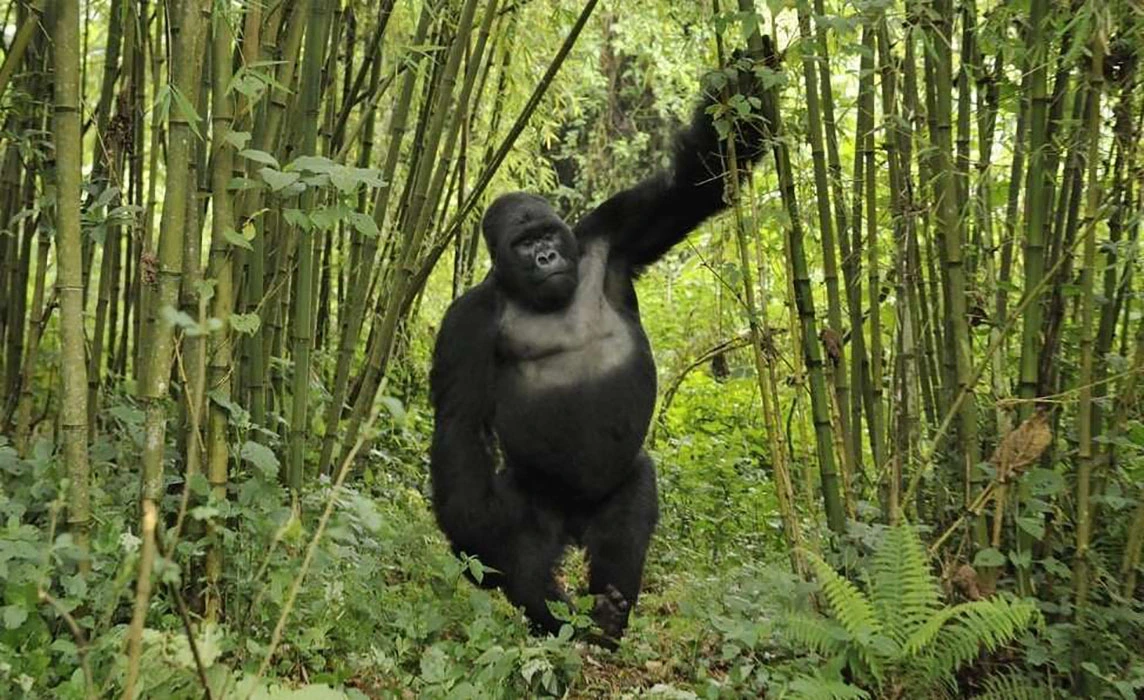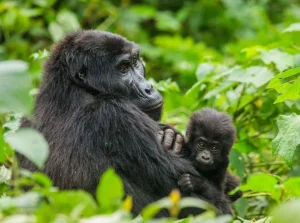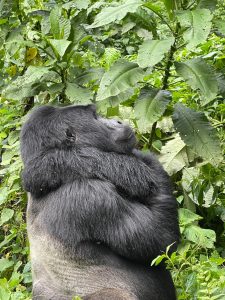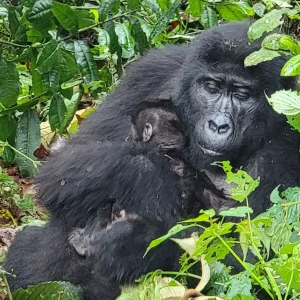Challenges of gorilla trekking
One of the most thrilling wildlife experiences is gorilla trekking, but it comes with its own set of challenges. Trekking through the deep rainforests of Rwanda, Uganda, or the Democratic Republic of the Congo in search of the magnificent mountain gorillas is exciting, but it also requires a lot of planning, mental toughness, and physical endurance. Challenges of gorilla trekking. This once-in-a-lifetime event is worth the effort for many people, but it’s important to know what to anticipate before you start your journey.
This blog examines the different gorilla trekking obstacles and provides advice on how to overcome them and maximize your time in Central Africa’s foggy forests.
The terrain is unpredictable, steep, and muddy.
The rough terrain is a major obstacle for gorilla trekkers. Volcanoes National Park, Bwindi Impenetrable National Park, and Virunga National Park all have wild, untamed rainforest paths that differ from conventional hiking tracks. Since gorillas often inhabit higher elevations—up to 3,000 meters (9,800 feet) above sea level—the hikes frequently entail hard ascents and descents.
Tree roots crisscross the paths, which can be rocky and uneven. You might also have to make your way through bamboo forests, thick foliage, and even prickly undergrowth due to the region’s extensive environment. To proceed, you might occasionally have to push aside branches, leaves, or vines.
Particularly during the rainy season [March to May and October to November], the mud makes things more difficult. When it rains, the trails become muddy and slick, making the hike much more difficult. Wet and muddy sections are likely to be encountered even during the dry season; therefore, having the appropriate equipment is crucial to handling the difficult conditions.
Expectations:
- Uneven terrain and steep inclines.
- Slick paths, particularly after rain.
- Dense vegetation that might make careful maneuvering necessary.
Wearing strong, waterproof hiking footwear with good traction and carrying a walking stick—which the park generally provides—are two tips. On rough terrain, trekking poles can also be useful for stability.
The weather is humid and unpredictable.
The weather in the tropical jungles where mountain gorillas reside is often erratic. Even in the dry season, there may be unexpected downpours and high humidity in the forest. The weather frequently changes rapidly; one minute the sun is blazing, and the next you’re in the middle of a torrential downpour.
Additionally, the humidity can be exhausting, particularly if you’re not acclimated to it. The walk can be physically taxing due to the combination of ascending steep slopes and traversing deep forests in hot, muggy weather.
- Even during the dry season, unexpected downpours of rain.
- High levels of humidity can make the hike more taxing.
- Cooler temperatures, particularly in the early morning or late afternoon, are found at higher elevations.
Advice
Bring a rain jacket that is lightweight, waterproof, and convenient to roll up and put in your bag. Sweating can be controlled by wearing moisture-wicking apparel, and layering is essential for temperature adaptation.
Physical Endurance: The Journey May Be Difficult and Prolonged
There are gorilla groups that are quite close to the park headquarters, while others may be far out in the forest and require up to six hours [or longer] hikes to locate. The gorillas’ whereabouts on any given day will determine the duration and difficulty of your walk, and because they travel around a lot, it is impossible to forecast where they will be.
The physical challenge can be unexpected for most trekkers who are new to the activity. In addition to having a strong cardiovascular system, gorilla trekking demands the capacity to traverse difficult terrain for extended periods of time. Breathing can become more challenging due to the altitude, the steep climbs, and the frequently uneven forest floor. Because of the steep terrain, even the descent back to the park headquarters can be difficult.
Expectations:
- Treks can last anywhere from two to six hours, depending on where the gorilla family is.
- Negotiating steep, uneven, and occasionally slick terrain.
- The physical strain of climbing at high elevations.
Advice
Work on your strength and cardio before the trek, paying special attention to your leg muscles and endurance. A porter can help you carry your bag and offer invaluable support on the more difficult parts of the trail, so think about hiring one.
Altitude: Difficulties in Breathing and Exhaustion
Because the gorillas inhabit high-altitude areas, frequently exceeding 2,500 meters (8,200 feet), the walk may become more challenging for hikers who are not used to high altitude. Even if you are physically healthy, the air gets thinner as you ascend, which can lead to exhaustion and shortness of breath.
Altitude sickness is a serious risk for novice hikers, especially those with limited prior high-altitude trekking experience. Headaches, nausea, and dizziness are some of the symptoms that can make the hike much more difficult.
Expectations:
- Tiredness brought on by the high altitude and shortness of breath.
- The risk for symptoms of altitude sickness, particularly high after more strenuous ascents.
Advice
Throughout the hike, pace yourself and take your time. Reaching the gorillas is not a rush, so don’t be scared to pause and rest if necessary. One strategy to fight weariness is to drink plenty of water and eat little snacks along the route.
Wildlife Safety: Respecting the Gorillas’ Personal Space
With knowledgeable guides, gorilla trekking is safe, but you are going into a wild animal’s habitat. Despite being accustomed to people, mountain gorillas are still wild animals who might behave erratically.
Rangers will advise you to keep a 7-meter [21-foot] distance and to stay away from loud noises and abrupt movements.
Keep the flash on your camera off so the animals won’t be startled.
Plan, but know it’s worthwhile.
Trekking with gorillas is difficult but transformative. The experience of standing in front of these amazing creatures is far more rewarding than the challenges, even though the trail may try your stamina and push you beyond your comfort zone. The journey is made easier with the correct mindset, reasonable expectations, and adequate preparation.




